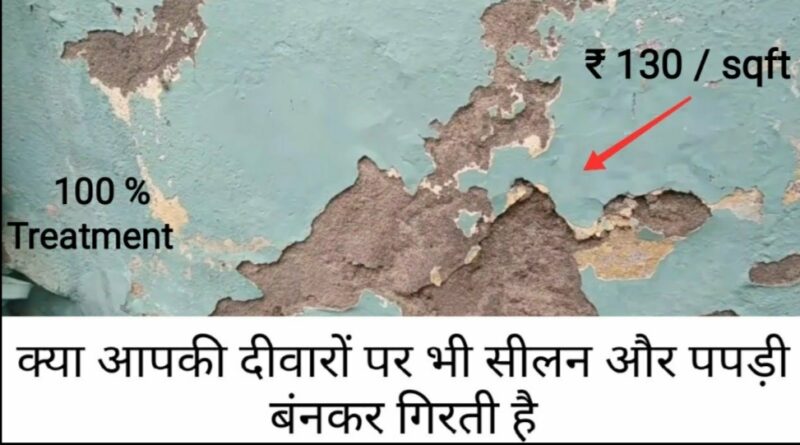METHODS TO PREVENT DAMPNESS IN BUILDING
Causes of Dampness in Buildings
Absorption of moisture by the building materials is one of the chief causes of dampness. On account of granular nature of materials, moisture finds an easy access through the voids and this aided by capillary action assists the moisture to travel in different directions.
Thus, either on account of faulty design of structure or bad workmanship or by use of defective structures or by use of defective materials, moisture may find its way on the interior of the building either through the wall, floor or roof.
Defects Caused by Dampness in Building
The various defects caused by dampness to building may be summarized as under:
- It causes efflorescence which may ultimately result in disintegration of bricks, stones, tiles etc.
- It may result in softening and crumbling of plaster.
- It may cause bleaching and flaking of paint with the formation of coloured patches.
- It may result in the warping, buckling and rotting of timber.
- It may lead to the corrosion of metals.
- It may cause deterioration to electrical fittings.
- It promotes growth of termites.
- It creates unhealthy living conditions for the occupants.
USE OF DAMP-PROOF COURSES (D.P.C.)
This consists in providing layers of membrane of water repellant material between the source of dampness and the part of the structure adjacent to it. This type of layer is commonly known as damp proof course (DPC) and it may comprise of materials like bituminous felts, mastic, asphalt, plastic or polythene sheets, cement concrete, etc.
Depending upon the source of dampness, DPC may be provided horizontally or vertically in floors, walls, etc. Provision of DPC in basement is normally termed as tanking.
These are layers or membranes of water repellent materials such as bituminous felts, mastic asphalt, plastic sheets, cement concrete, mortar, metal sheets, stones etc.
The best location or position of D.P.C. in the case of building without basement lies at plinth level or structures without any plinth level, it should be laid at least 15cm above ground level. The damp proof course is provided horizontally and vertically in floors, walls etc.
Surface coating
Surface treatment consists in filling up the pores of the surfaces subjected to dampness. The use of water repellant metallic soaps such as calcium and aluminium oleates and stearates is such effective in protecting the building against the ravages of heavy rain.
Bituminous solution, cement coating, transparent coatings, paints, varnishes fall under this category.
In addition to other surface treatment given to walls, the one economically used is lime cement plaster. The walls plastered with cement, lime and sand in proportion of 1:3:6 is found to serve the purpose of preventing dampness in wall due to rain effectively.
Guniting
This consists in depositing an impervious layer of rich cement mortar over the surface to be waterproofed. The operation is carried out by use of a machine known as cement gun.
The assembly broadly consists of a machine having arrangements for mixing materials and a compressor for forcing the mixture under pressure through a 50mm diameter flexible hose pipe. The hose pipe has nozzle at its free end to which water is supplied under pressure through a separate connection.
The surface to be treated is first thoroughly cleaned of dirt, dust, grease or loose particles and wetted properly. Cement and sand (or fine aggregates) usually taken in proportion of 1:3 to 1:4 are then fed into the machine.
This mixture is finally shot on the prepared surface under a pressure of 2 to 3 kg per square cm by holding the nozzle of the cement gun at the distance of 75 to 90 cm from the working surface.

